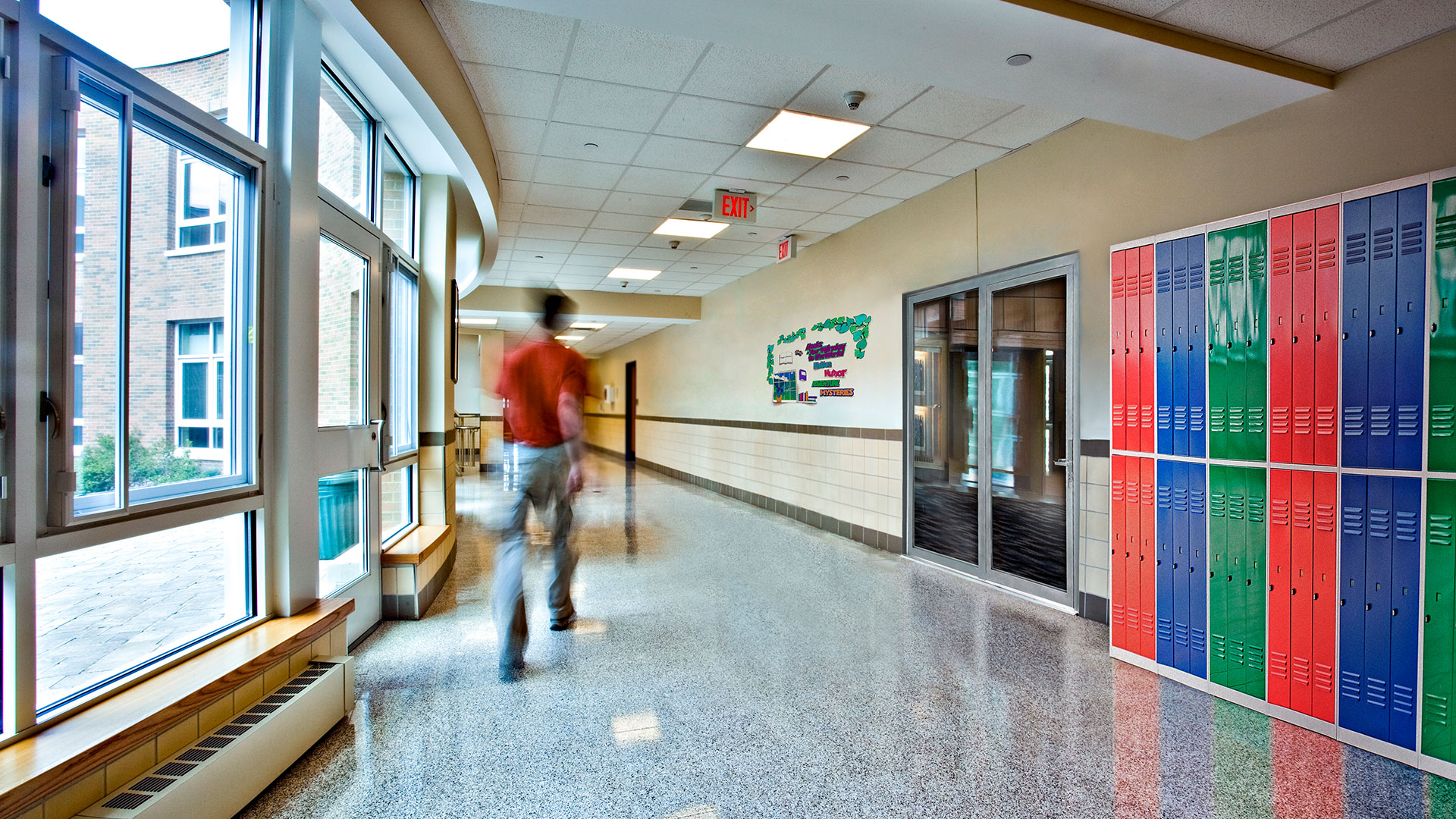Creating Safer Spaces: A Deep Dive into Bullet-Resistant Glass

In recent years, forced entry- and bullet-resistant glass have seen increased use in multiple occupancy types, from schools, banks, currency exchanges, police stations, embassies, military installations to prisons and detention centers. For example, since 2019, work to install bullet-resistant glass in the windows of Florida’s Capitol Complex is underway, which was approved by the state legislature to bolster security as part of a larger renovation project. Similarly, across the country, various local governing bodies in states like Tennessee, Missouri and Texas have passed bills to harden the exterior of school buildings with security-rated materials.
Bullet-resistant glass can be used in external doors and windows as well as entry vestibules, storefronts and deep within a building’s interior. It can also be used for reception areas of healthcare facilities. This best practice is recommended by the National Institute for Occupational Safety and Health (NIOSH), a division of the Centers for Disease Control, to safeguard healthcare workers against violence.
Bolstering security through material selection
Regardless of the application, the purpose of bullet-resistant glass remains the same: to give occupants more time to get to safety and alert first responders to a threat—key considerations for safer building design. This function extends to include materials such as all-glass laminates, glass-clad polycarbonate laminates and other laminated or monolithic plastic.
To serve glass as an improved safety barrier against ballistic attacks, bullet-resistant glass is typically laminated with a UL-752-tested security-rated film on the interior side. This helps protect people on the safe side of the glass by reducing shatter or spall during a ballistic attack. As such, UL-752 ratings offer an 8-tier grading system for understanding ballistic protection in bullet resistant glass, ranging from Level 1 to Level 8. A bullet-resistant glass rated for any level is required to withstand a specific type of ballistic impact, factoring in aspects such as the type of firearm and number of shots it can protect against.
Ballistic-rated glass may also be tested to forced entry standards, which helps them delay violent intruders. However, it is important to note that currently there are no model code standards for using security-rated materials, including bullet-resistant glass, in the built environment. For this reason, specifiers are encouraged to meet with security and safer building design experts to determine which materials and systems support a project’s individual security goals.
Typically, factors like building type and function, property size and location play an important role in designing security plans. For instance, a healthcare facility may choose to install impact- and bullet-resistant glass in all external doors, whereas a detention center may want to integrate impact-resistant glass in all their internal openings and security-rated glass in their external openings to suit individual security goals, which can vary from occupant safety and wellbeing to protecting physical assets.
It’s important to note that while bullet-resistant glazing assemblies play an important role in enhancing building security, real-world active shooter and violent intruder events may vary from controlled testing conditions. As a result, no security system can be deemed impervious to all possible threats.
A multilayered approach to building security systems
To better the possibility of defense for building users and occupants, a recommended best practice is to layer security measures. This can significantly bolster the effectiveness of individual security systems. To do this, it is important to understand how different layers of the built environment, as well as types of protective systems, can work together.
For example, door assemblies with bullet-resistant glass can be enhanced with components like manual or automatic locking hardware. Likewise, security cameras and monitoring equipment can be supported with transparent security-rated glass since this material allows open sightlines from main offices to parking lots, hallways and other adjacent spaces. Design teams and building management can tailor a multi-layer approach, based on their security needs and priorities, to protect property, occupants and assets.
Moreover, layering security enhancements can help properties develop a multiyear security investment plan. As many best-practice resources are organized in a tier format, project owners can work with design teams to identify their most pressing needs first while acknowledging places for future improvement. Whatever the case may be, it is encouraged that facility owners and management consult with security experts and resources to identify which solutions make the most sense for their security goals.
Prioritizing security and life safety
The desire to improve the security of a building must not come at the expense of providing code-driven fire safety as recommended by International Building Codes (IBC) and the National Fire Protection Association’s Life Safety Code (NFPA 101). Whether driven by code or security requirements, building teams might need to opt for a system that can provide protection against multiple life-safety threats.
Glass assemblies can achieve both fire- and forced-entry resistance ratings. These fire-rated, multifunctional glazing assemblies are tested to multiple standard protocols or utilize compatible products to provide a high level of forced-entry attack resistance, security and containment ratings of up to 60 minutes. If desired, the glazing within the multifunctional system can meet ballistic-rating protocols.
Proactive approach to occupant safety
Balancing building requirements with appropriate security measures to mitigate risk can be challenging and complex. Further, it is important that these goals work to support occupant experience, including creating open, light-filled spaces.
Bullet-resistant glass can fortify openings without compromising design intent. In addition, fire-rated, multifunctional glass assemblies can meet security goals in areas that also need to provide code-driven fire safety.


 David Vermeulen is North America Sales Director for Technical Glass Products and also the author of the Fired Up blog on Glass Magazine.
David Vermeulen is North America Sales Director for Technical Glass Products and also the author of the Fired Up blog on Glass Magazine.